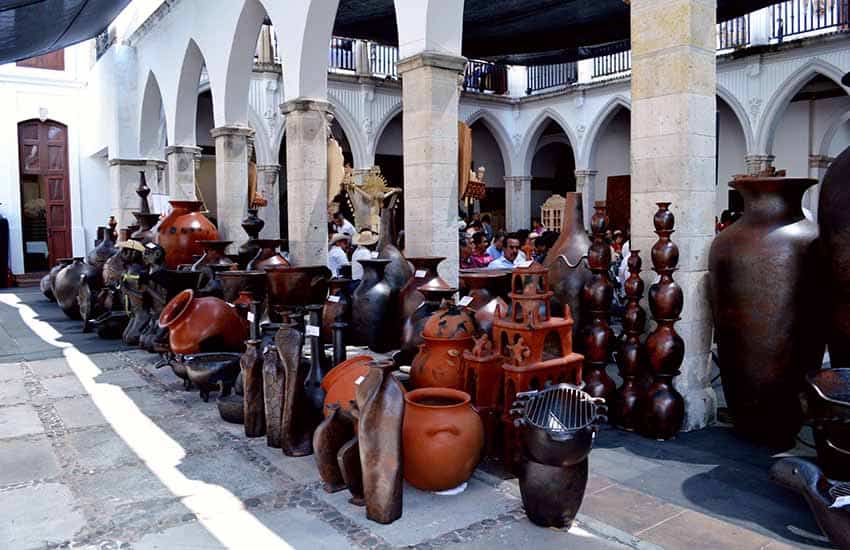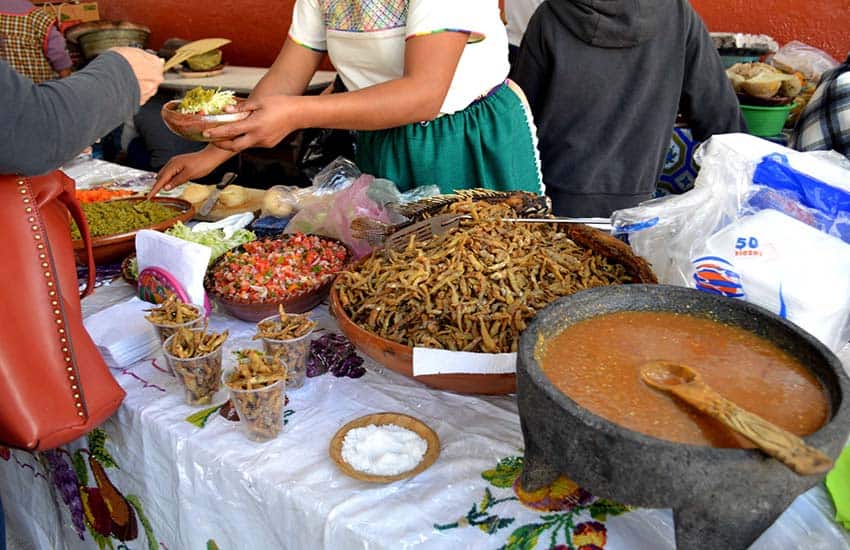I would venture to guess that many Mexican handcraft aficionados started out like I did, attracted at first by colorful baubles in tourist markets, then wanting to know if what I was buying was “real” or not.
Although it is getting easier to find information about Mexico’s true artisans, it still requires a bit of legwork. Your best bet is to buy direct from one at their workshop (often in their home), but if that is not possible, there are a few highly reputable annual handcraft fairs in Mexico.
With the pandemic easing, I’m glad to say that Michoacan’s Tianguis de Domingo de Ramos (Palm Sunday Handcraft Market) in the city of Uruapan is back.
Uruapan today is best-known for being in the state’s avocado-growing region, but it hosts what Michoacán officials say is the largest handcraft market of its kind in Latin America. Certainly, it draws over 1,300 artisans per year from all over Michoacán to display their wares for sale.
The focal point of the event is at the city’s main plaza, which annually gets covered in tarps that shelter a maze of aisles and stands. Stalls also spill over into adjoining streets.

The event promotes the four main indigenous cultures of the state: the Purépecha, Mazahua, Nahua and Otomi. The Purépecha are best represented, not only because they are the dominant group but also because handcraft production has been highly developed in their region since both the pre-Hispanic and colonial periods.
Pottery is the main draw, followed closely by wood items. You’ll also find traditional clothing, miniatures, jewelry, toys, lacquered items and leather. One other interesting item to find if you go on or before Palm Sunday is the plethora of nimble fingers that weave palm fronds into intricate shapes for the holiday.
The fair does a decent job of keeping out items not made in Michoacán — usually cheap souvenir items; its only small sin is that not all vendors are artisans; some are resellers.
As always, buyer beware, but the overall quality of merchandise here is good.
But the event is more than just a market. The Tianguis begins on the Saturday before Palm Sunday (this year on April 9) with a parade to welcome the participating artisans and a demonstration of Purépecha cooking. This year, that date also features a concert by Lila Downs. All of the days have some kind of event related to food, dress, music, dance and more. You can see a schedule in Spanish here.
I should note that the event has grown tremendously in the past few years, but if you are looking to buy the finest handcrafts the market has to offer, arrive before Palm Sunday (April 10). As with all events of this type, the best stuff sells out almost immediately. However, the handcrafts and cultural events are available all the way until the event ends on April 24, and even just the food is worth the trip.

I also strongly recommend checking out pieces from the LXI Michoacán State Handcraft fair, whose winners will be announced on April 10 at Uruapan’s Casa de Cultura (cultural center). The chances of buying any of these pieces are low since people with connections usually get to them first. But you will get to see the best of the best and learn who makes them. You can always contact the artisan later to get your own piece made. Many of the artisans are on Facebook.
In addition to everything that the city has to offer, such as the Barranca del Cupatitzio National Park, Uruapan is also near other Michoacán attractions such as the Paricutín volcano (main access is in the town of Angahuan) and the better-known city of Pátzcuaro.
There are, however, a couple of potential drawbacks to attending the fair: firstly, most of the event occurs during Holy Week, a major vacation period for Mexico, and so hotel space may be difficult to find in Uruapan proper. Secondly, this part of Michoacán admittedly has long had problems with narcos. I personally have never run into any issues, but if you are concerned, nearby Pátzcuaro is an easy ride, meaning you can spend your nights there and your days in Uruapan.
The fair brings experienced collectors back year after year, and for newbies, I know of few other places to jump in and be surrounded by the true magic of what Mexico’s hands create.
Leigh Thelmadatter arrived in Mexico 18 years ago and fell in love with the land and the culture in particular its handcrafts and art. She is the author of Mexican Cartonería: Paper, Paste and Fiesta (Schiffer 2019). Her culture column appears regularly on Mexico News Daily.
